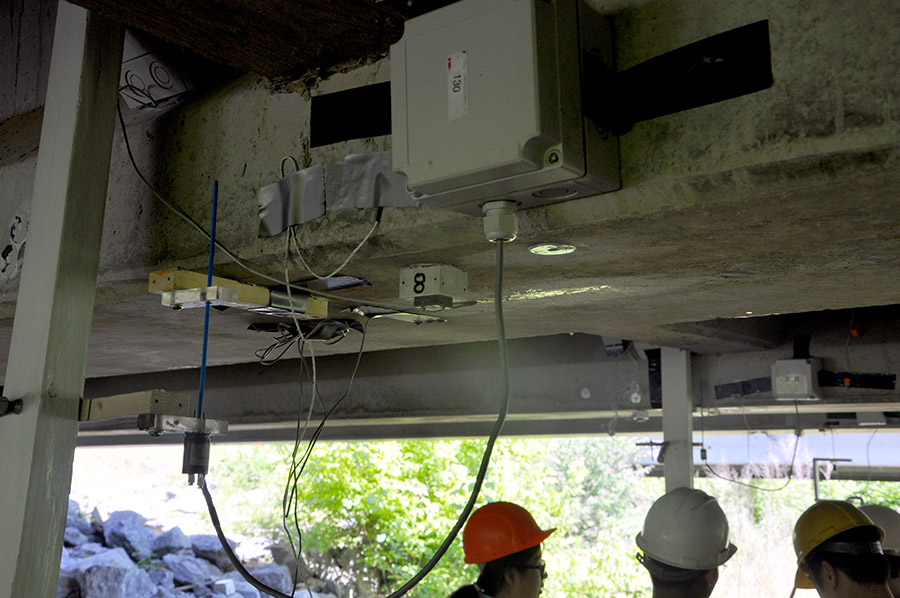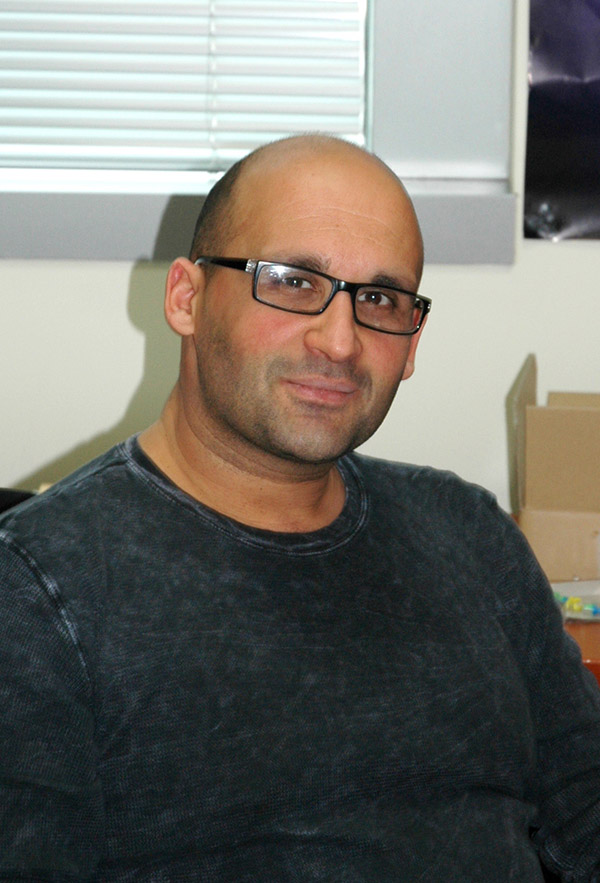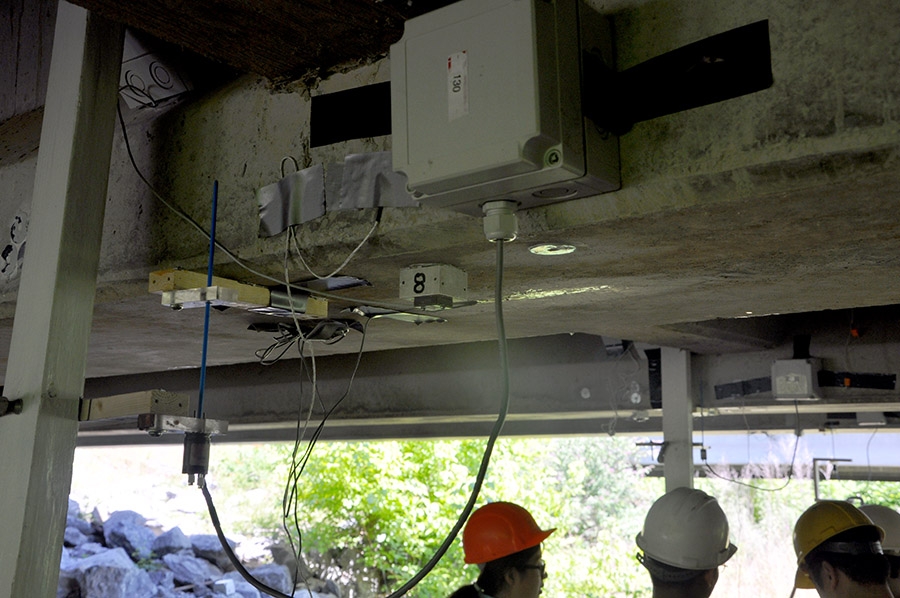 Yang Wang and students in his research group install sensors on a bridge in Bartow County, Georgia, in July 2016. Wang, Francesco Fedele and Rafi Muhanna in the School of Civil and Environmental Engineering will use data from instruments like these to feed a new interval-based optimization approach to assess structural systems and detect damage. The National Science Foundation-funded collaboration will result in faster, more reliable predictions about how structures behave and any structural damage or deterioration. (Photo Courtesy: Yang Wang) |
The National Science Foundation has funded a new collaboration between three School of Civil and Environmental Engineering researchers that could make finding damage in bridges or buildings easier and help reduce life-threatening failures.
If successful, the team will be able to produce more reliable predictions about how structures behave, and their algorithm will be able to do the predictions much more quickly than current practice for structural damage and deterioration assessments.
That means in the aftermath of disasters like October’s Hurricane Matthew, officials could rapidly identify the most critical structures and make repairs on those first.
The project relies on the synergy of mathematical, computational and experimental methodologies that have matured largely in isolation from each other within different engineering disciplines.
The team uses Rafi Muhanna’s interval-based uncertainty treatment, Francesco Fedele’s optimization techniques, and wireless monitoring sensors developed by Yang Wang in the context of a new interval-based optimization approach to assess structural systems and detect damage. It’s what scientists call an “inverse problem” — you have a structure and want to work “backwards” to predict its properties.
 Fedele |
 Muhanna |
 Wang |
“We want something more concrete, more practical, and based on very innovative fundamental theoretical background,” Muhanna said.
“As such, we do not propose an incremental approach, but instead we wish to offer a new perspective with an interval-based approach that enables us to identify damage in structures directly from raw measurements of displacements or accelerations,” Muhanna said.
He said measurements like this are inherently uncertain — the measuring devices themselves have tolerances and field conditions vary. So the team’s method uses data expressed as intervals rather than one specific value.
“You can install those sensors over a bridge, or any structure, and collect whatever data you wish — it might be strain, acceleration, among others,” Wang said. “We can process the data through our new methods and predict the material properties at different locations. That means if we have significant damage in the bridge, we can figure out the location and the amount of reduction in the bridge’s stiffness.”
“So instead of inspecting the bridge physically, you have more information available to figure out exactly where the damage is, and you go and repair it.” Muhanna added.
The current approach to doing this kind of work involves taking measurements of a structure — a bridge, a building, any structure — and calculating a specific value that predicts the condition of the structure. The problem is, our measurements are inherently inaccurate.
“If you’re collecting data, you use measuring devices,” Muhanna said. “There’s no measuring device in the world without tolerance. No measuring device can measure exactly.”
He said any number of other factors also can affect measurements taken in the field. So the resulting prediction is unrealistic — it relies on assumptions, and a small change in those assumptions can change the resulting prediction. May be a lot.
In this project, the research team will create a tool that accounts for all of that uncertainty.
“Instead of predicting a specific value [from our measurement data], which is not realistic, we predict a specific range for that value,” Muhanna said, and it’s guaranteed the correct answer is within that range.
“That’s the big advantage of interval arithmetic: it provides guaranteed bounds.”
Years ago, engineers tried to use intervals to predict structural system behavior, Muhanna said, but the range they produced was so large that it was essentially meaningless.
Muhanna has developed the theory over time to narrow that range to 0.1 percent on either side of the actual answer. That’s what makes it possible now to apply the team’s approach. And it’s an efficient method, taking far less time to run the necessary computer models than other approaches.
“A regular bridge inspection takes place every two years. But here, you have all the data collected continuously [using installed sensors],” Muhanna said. “You have a stream of data and can run, for example, an analysis [on your structure] once per week.”
The three-year project, funded with more than $450,000 from the NSF, also has the potential to offer new tools for detecting cancers or the properties of soil underground, Muhanna said. These kinds of inverse problems — you have a structure or tissue or soil and want to work “backwards” to predict its properties — exist throughout engineering and science, he said.

